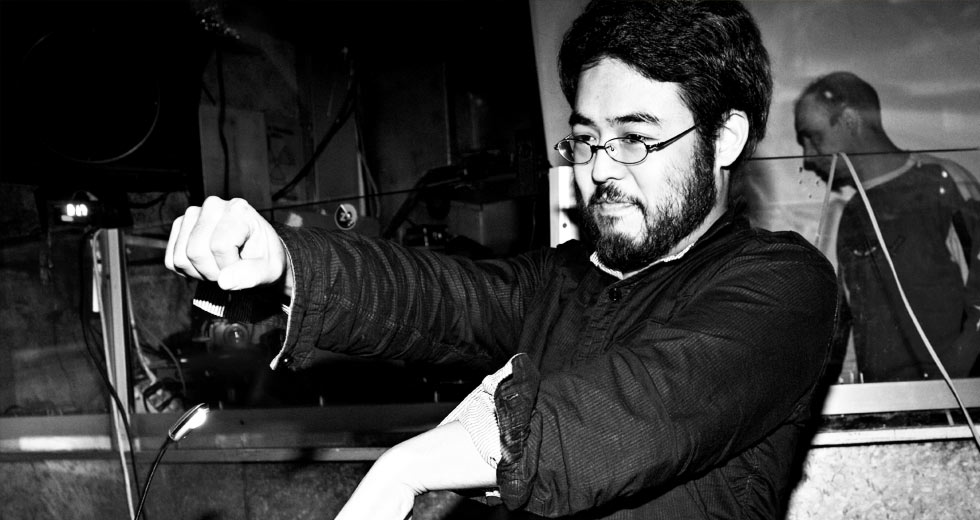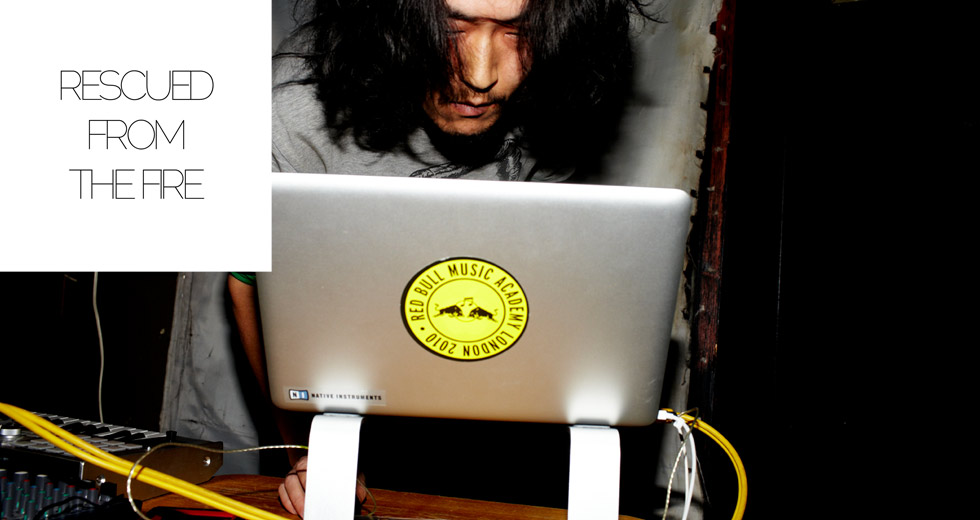Off Site: Improvised Music From Japan
At the turn of the millennium, improvised music from Japan became incredibly quiet. Clive Bell explains why previously noisy artists turned the volume down.
Tokyo boomed big-time through the ’90s, a decade of turbo-charged economy and spiralling property prices. The changes must have bemused the older generation who lived through post-WWII deprivation and seven years of American occupation (during which Japan had no sovereignty, and no Japanese were allowed to travel abroad). Still, very little information about Japanese underground music leaked out. During the early part of the decade, the Japanese exported very little alternative music, and the outside world knew next to nothing about what they were up to.
By 1995 – when Otomo Yoshihide and Boredoms singer Eye played the London Musicians Collective festival – it was clear to outside audiences that something was brewing in Japan. During their performance, Otomo unleashed flash floods of sound from turntables and a crude homemade guitar, while Eye leapt from tables and raced around the Purcell Room stage as if pursued by hellhounds. Some pieces were five seconds long, others a shade longer, but all were greeted with whooping delight from the audience, who were unaccustomed to this pistol-in-the-back passion crossed with slapstick entertainment.
Intriguing reports had already emerged from Osaka about Boredoms, founded in 1986 by Yamatsuka Eye and joined two years later by drummer Yoshimi P-We. Despite being an extreme act, Boredoms were signed to Warner Brothers and toured the US and UK, sometimes alongside Sonic Youth. Otomo, meanwhile, was a kid from Fukushima, 300 km north of Tokyo – a city far better known now than it was then, due to a nuclear accident in March 2011. The first gig Otomo ever paid to see, as a teenager, was by the legendary free-punk improviser Kaoru Abe, playing sax and feedback guitar in a Fukushima jazz coffee shop. It was this feedback that launched Otomo onto his own musical trajectory.
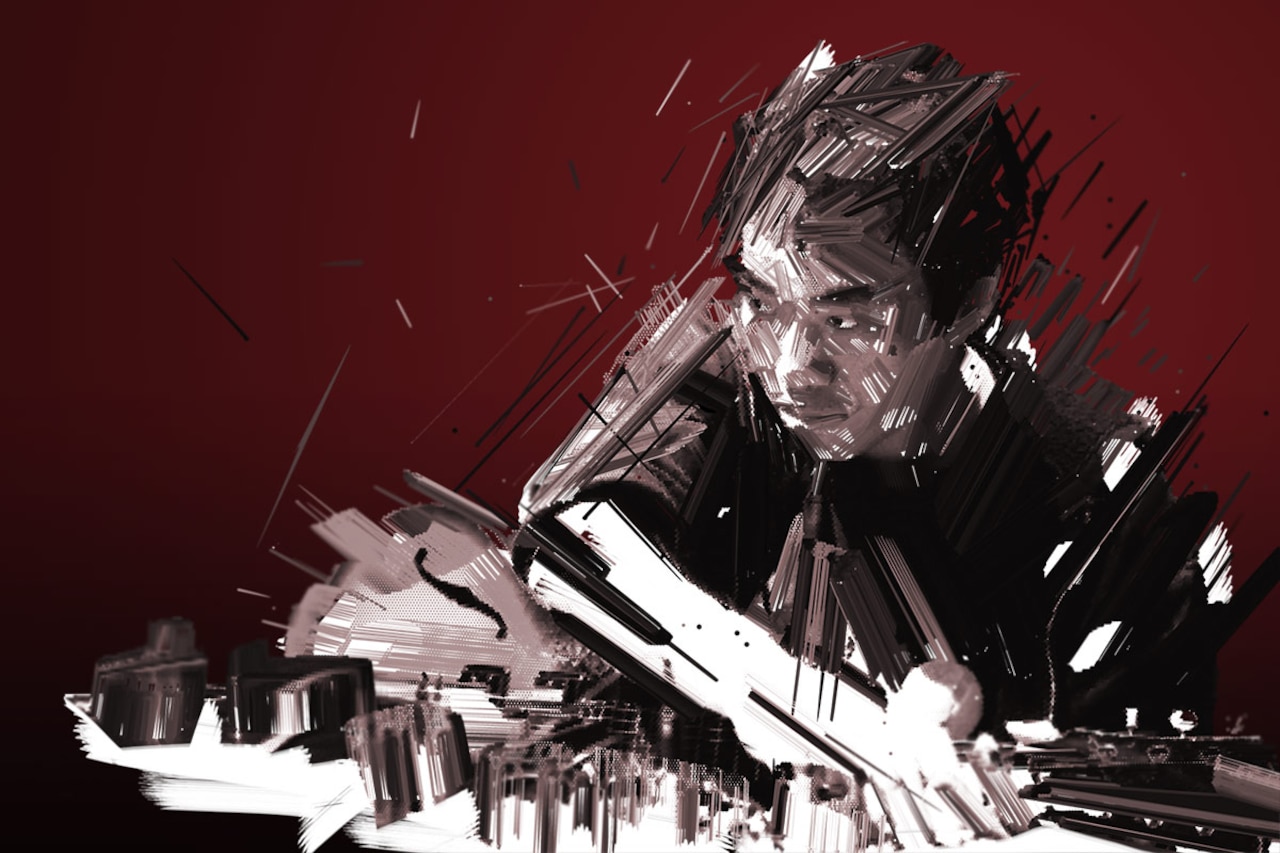
Looking deeper, it’s now clear that improvisation and noise already had a lengthy history in Japan. The guitar work of Takayanagi and Keiji Haino in the ’80s flowed into the work of noise maestro Merzbow (Masami Akita) and Jojo Hiroshige’s guitar-trashing outfit Hijokaidan. As for Otomo, he spent the booming ’90s running Ground Zero, a seismic combo boasting double drummers, double guitarists and double samplers. With Ground Zero, he cemented the terrific sense of timing and drama that make him such a compelling improviser to watch.
Ground Zero was an audio overload of information, deliberately flinging together sounds normally at odds with one another – such as traditional music from a Japanese koto or a Korean oboe with guitar squall – while exploiting novel sampler technology. Tokyo was awash in money, noise, and information, and Ground Zero was an overwhelming response.
And then there was a radical shift. The mighty roar of Ground Zero died away in 1998, and its members pondered their next move. “After Ground Zero I couldn't do anything,” said Otomo. “I just read manga for three months. Then I tried to start from just listening.” The group’s sampler expert, keen for a fresh start, changed her name to Sachiko M and looked deeper into her machines, wondering what lay behind their chameleon-like ability to perform any sound on demand.
Meanwhile a new generation was starting to speak in a strangely subdued voice. They pursued a fresh take on improvising: an approach that foregrounded listening, patience and silence, rather than physical energy and lightning-fast responses.
This scene was brewing in a little old house in Shinjuku named Off Site. Off Site was located next to Yoyogi station in Tokyo, steps away from the 60-story NTT DoCoMo skyscraper, home to the company that revolutionised Japan’s mobile phone market. Like the offspring of the Empire State Building and Big Ben, the DoCoMo tower features a spire, recessed lights in glowing green, and a colossal clock lit up in white. “It’s full of evil scientists plotting world domination,” musician Toshimaru Nakamura told me in 2003, as we sat inside Off Site, barely 50 metres away.
The Off Site space was rented by Atsuhiro Ito11Ito himself is well known for his installations involving large numbers of fluorescent lights, and built an instrument called the Optron using the light as a sound source. and his wife Yukari. The pair converted the house into a spartan gallery and performing space on the ground floor, seating 50 maximum, and a welcoming café and book-and-record shop upstairs. Even closer than the DoCoMo tower were Off Site’s neighbours, just on the other side of thin plaster walls. “Usually when you rent a place you can’t modify anything, but this place is very old, a kind of disposable house,” Nakamura told me. “Probably the landlord is planning to demolish it, so Ito could do anything he wanted. One of the neighbours came round with a noise inspector from the city government. It’s very problematic, so we are forced to play quiet.”
The Off Site musicians had little choice but to develop a quiet style – even though they were already moving in this direction. The original Off Site triumvirate was Toshimaru Nakamura (no-input mixing board, baseball cap) and friends Tetuzi Akiyama (guitar, broad-brimmed hat) and Taku Sugimoto (guitar, pork pie). They looked like a trio of refugees from a spaghetti Western movie. Previously, the three had run a concert series at Bar Aoyama, a venue where the nearby expressway contributed to the soundscape. As their music refined towards pianissimo, they realised the tight focus of the Off Site room might work better.
We were enthusiastic about the space between notes. It was as if we weren’t responding but playing parallel to one another.
From 2000 until 2003 Akiyama, with his friends Nakamura and Taku Sugimoto, ran the “Meeting” series at Off Site gallery. “Before that, Taku and I were playing very weird blues and also as a Messiaen-influenced quiet duo.” I asked Akiyama where that quiet music came from. “Taku did that approach first. We were all very careful about making sound, and by that time all of us were bored with Japanese noise and psychedelia – no more, we felt.” Then came Off Site, complete with disgruntled neighbours. “So we had to do it much quieter. It was a kind of coincidence that we had that opportunity to play quiet. A lot of improvising guys can only play loud, with plenty of effects. Someone steals their gear, you say here’s an acoustic guitar, they can’t do anything. But we were enthusiastic about the space between notes. It was as if we weren’t responding but playing parallel to one another – the feeling that we were just letting the music go.”
Nakamura is equally at home in an intimate room or on a large festival stage, and pointed out that there’s freedom in both. “I am playing with the room. When you look through a microscope, you see a microscopic world. It’s a whole universe, just the scale is different. So when you play quiet, you still have the same amount of freedom. Total, limitless freedom is just an illusion. Even if you can play very loud you have limits – for example, the room itself or the capacity of the PA system. So I don’t feel restricted playing in a small room. It’s the same – I feel there’s enough space for me.”
Nakamura’s no-input mixing board is a set-up for capturing and sculpting feedback. Whether loud or quiet, it’s a surprisingly fertile source, generating elusive waves of sound as if painting pictures with lightning. The first occasion I saw him in London was memorable: his monitors caught fire just before he started his set. There was a pause while the smoke cleared and the speakers were replaced. When we talked at Off Site, Nakamura had just released an astonishing record, Vehicle. Recorded while he was in the grip of a fever and sky-high temperature, these shifting loops of low end bounce across the dancefloor like a hippo on helium. It’s a rare coming together of free improv and the power of the riff.

Nakamura’s sparring partner Tetuzi Akiyama is known among colleagues as “Cap,” and has the ruthless, languorous poise of a Japanese Clint Eastwood. (His first name is pronounced “Tetsuji,” but deliberately written with an obsolete Romanization of the Japanese characters.) Akiyama’s range as an experimentalist is unusually wide. A slew of albums have documented his skills as a collaborator, especially in duos. In 2002 he began bowing his resonator guitar with a samurai sword, one of several he found in his parents’ house. “It’s true that my family were samurai in the distant past,” Akiyama explained to me, “but this sword came later, from when my grandfather was practising the martial art iai-do, and doing swordplay accompanied by poetry recitation. So this sword is relatively new, about 50 to 100 years old. The resonator guitar has no pickup, so my idea was to put the pickups not on the guitar but on the katana [sword] itself.”
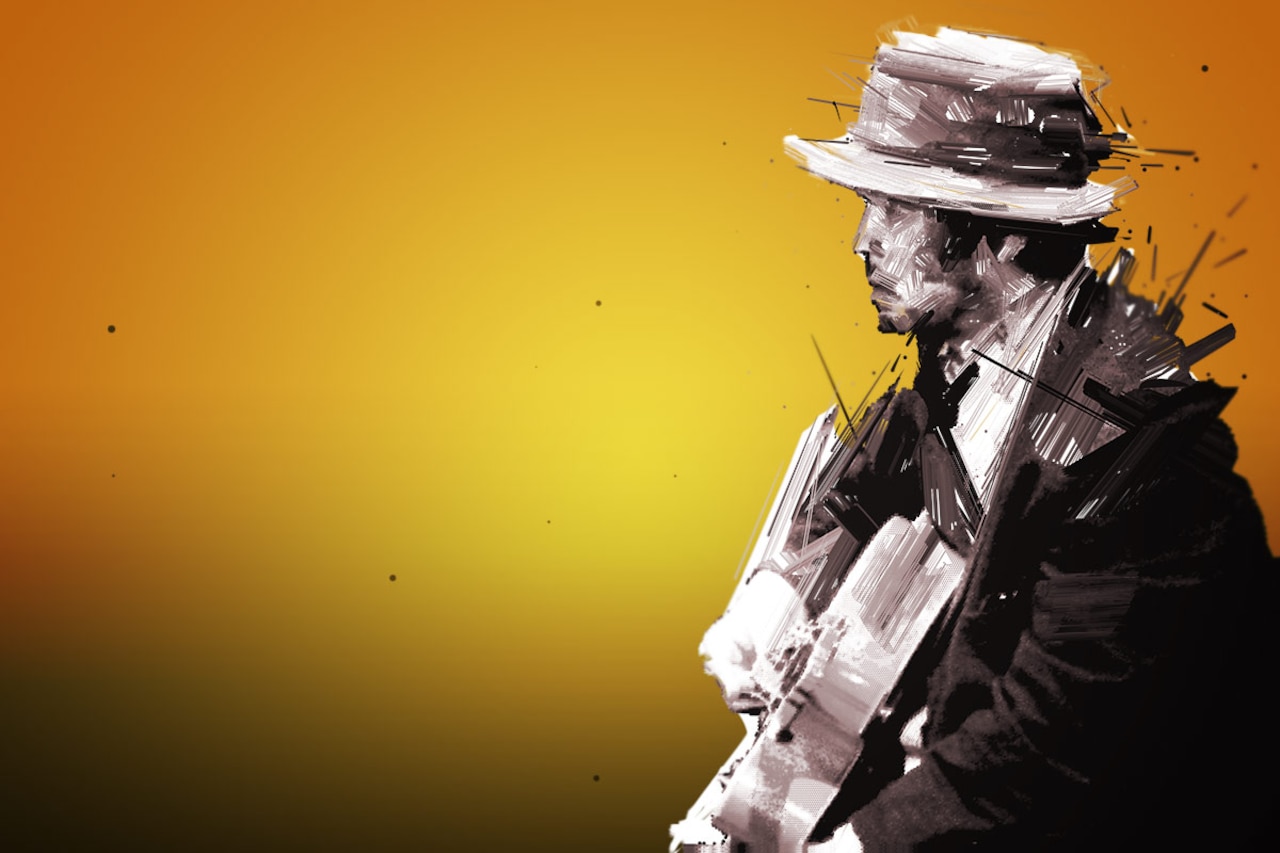
The third member of this influential trio was Taku Sugimoto, already attracting international attention in 1998 for his solo release Opposite. He was one of the most original guitar voices since Derek Bailey, and a true master of understatement – a guitarist who would creep up from behind and mug you with a feather rather than a baseball bat. Sugimoto spent his first year at Off Site helping to organise the “Meeting” series, where a guest – such as British saxophonist Seymour Wright or American bassist Jason Roebke – would play alongside the resident trio. The local Tokyo crowd included vocalist Ami Yoshida and synth player Utah Kawasaki, plus Sachiko M and Otomo. In 2002, a CD documented their concert series with a short note by Nakamura on the front cover: “The sound in these performances is often so feeble that it welcomes into the music noises from outside, such as the whistle of a tofu vendor and the wooden clappers of people calling ‘Beware of fire’ as they walk through the neighborhood. All this has happened at the very end of a maze of narrow streets in the center of Tokyo.”
Sugimoto was committed to the project – and then suddenly vanished. After one year he was impatient with what he saw as a new improv orthodoxy, and fled into an even more austere style. Heavily influenced by the Wandelweiser group of composers, Sugimoto began crafting ultra-minimal compositions in which you might be lucky to hear a couple of notes every ten minutes. When we talked in 2003, he had just walked out on Off Site. While still friends with many of the musicians there, Sugimoto felt the challenge was gone and the scene was stagnating into “a tiny academy of the Onkyo-order.” (Onkyo, meaning “sound,” was the name for this style of Japanese quiet improvisation, popular with journalists outside Japan, but not much favoured by the musicians). “I have been too much involved with Off Site,” Sugimoto wrote to me. “I am determined not to play there anymore.”
“Sugimoto is like a cat,” Nakamura told me. “Pouncing when excited. Then, when he doesn’t like something, he’s off; never says goodbye. Akiyama and I, we do the same thing long term. While Sugimoto is more like, ‘Okay, do this right now, then stop, wait for the next idea to come, and come back again. He is really brave and clear with his ideas, and I really respect his music.”
The most important thing for me is to make something really vertical; something spiritual, like a tower.
Sugimoto is uncompromising in his search for something he refuses to define. As I questioned Sugimoto about what he was aiming to do, I had another image, of myself chasing butterflies with a wooden mallet. “No goal – no solution,” he insisted. So what is the important quality in musical silence? “I have no idea! Maybe I like nothing – no notes – but that doesn’t exist as music. The most important thing for me is to make something really vertical; something spiritual, like a tower. The whole of the culture is very horizontal, it’s surface. We don’t really need it, it’s just for amusement. Art has become like TV, there’s nothing to believe in. We need something spiritual, real culture.”
Many other musicians were regularly active at Off Site, several organising their own series of concerts. If you want to program concerts at a Tokyo venue, first you pick a name for your series. Then each event becomes a numbered volume, as if you were publishing a series of books. I attended one of Atsuhiro Ito’s series, a night titled “Absolute Antenna Vol. 23.” Singer Ami Yoshida played and recorded in the venue, specialising in short, sharp chunks of vocalising, glottal whistles and tiny screams. Applying a little electronic manipulation, she sounded like a whistling kettle, a short-wave radio, a rainforest full of insects cursing at frogs, a baby gurgling and bubbling saliva.
Crucial to the whole scene was the tireless Yoshiyuki Suzuki. He started up a website, a label and a book-cum-magazine, all called Improvised Music From Japan. In December 2001 he celebrated five years of the website by releasing ten CDs in a paulownia wood box (under the title of Improvised Music From Japan of course). It quickly sold out. “It’s unbelievable that he can actually make a living from it,” Akiyama told me, “He has good business sense.”
“If I had good business sense,” retorted Suzuki, “I would never have released these records.” Self-effacing and modest to a fault, Suzuki played down his role, answering all my enquiries with, “I don’t know. I’m not a musician.”
Opening up the viewfinder for a moment, it’s clear this pianissimo improv was not simply a Japanese phenomenon. There was a scene in London, associated with Mark Wastell’s Sound 323 record store, half-jokingly labelled New London Silence22As one disgruntled English musician put it, “Uh, so like, Japanese silence is better than English silence, is it?”. Additionally, the compelling soundscapes of AMM have had a crucial historical influence on the London scene since the 1960s. Pianist John Tilbury, percussionist Eddie Prevost and tabletop guitarist Keith Rowe were hardly quiet, but the glacial patience of their shows became a benchmark for musicians escaping free improv’s typically hyperactive helter skelter.
This music perhaps achieved its maximum traction in Berlin, with scores of tiny venues organising events to this day. The Germans decided to christen it Echtzeitmusik (“real-time music”), and in 2011 documented it thoroughly in a fat book, Echtzeitmusik Berlin: Self-Defining a Scene. Toshimaru Nakamura contributed a memoir to this book, looking back on his important visits to Berlin. “Improvisation is not something you do for fun… But there was something that made me focused on improvised music, and it was around that period I opened the door to that field. And I think that it was in Berlin, not in Tokyo, where I found this door.”

So what lay behind Tokyo minimal improv, and how did it fit into Japanese culture in a wider sense? Some commentators jumped to conclusions: it’s quiet, it’s full of silence, it’s Japanese... It must be Zen. “My music is just happening,” said Nakamura in a US tour interview from 2003. “Actually I don’t know anything about Zen. No! One hundred percent honestly, no… Maybe listeners want to make some association with something else and then want to understand more deeply: ‘OK, he is from Japan, so there must be some relationship with his tradition.’ Maybe in the air and in some part of my body, yes, but it’s not my intention and I don’t know anything about it.”
It’s hard to grasp what place traditional culture really occupies for contemporary Japanese. It’s normal to have never seen a Noh play or seen someone play a shakuhachi or seen Kabuki theater except on TV. Japan’s best known classical composer, Toru Takemitsu, studied Western composition before encountering Japanese traditional music and he rarely wrote for Japanese instruments.
And yet, however abused, Japanese tradition undeniably exists in a way that has little parallel in the West. The ritual calm of the tea ceremony, the aesthetics of flower arranging, the philosophy of archery, the sound of the biwa lute and the ninth century sho mouth organ – these are available, like a trunk full of clothes for dressing up, when a Japanese artist needs to draw on them.
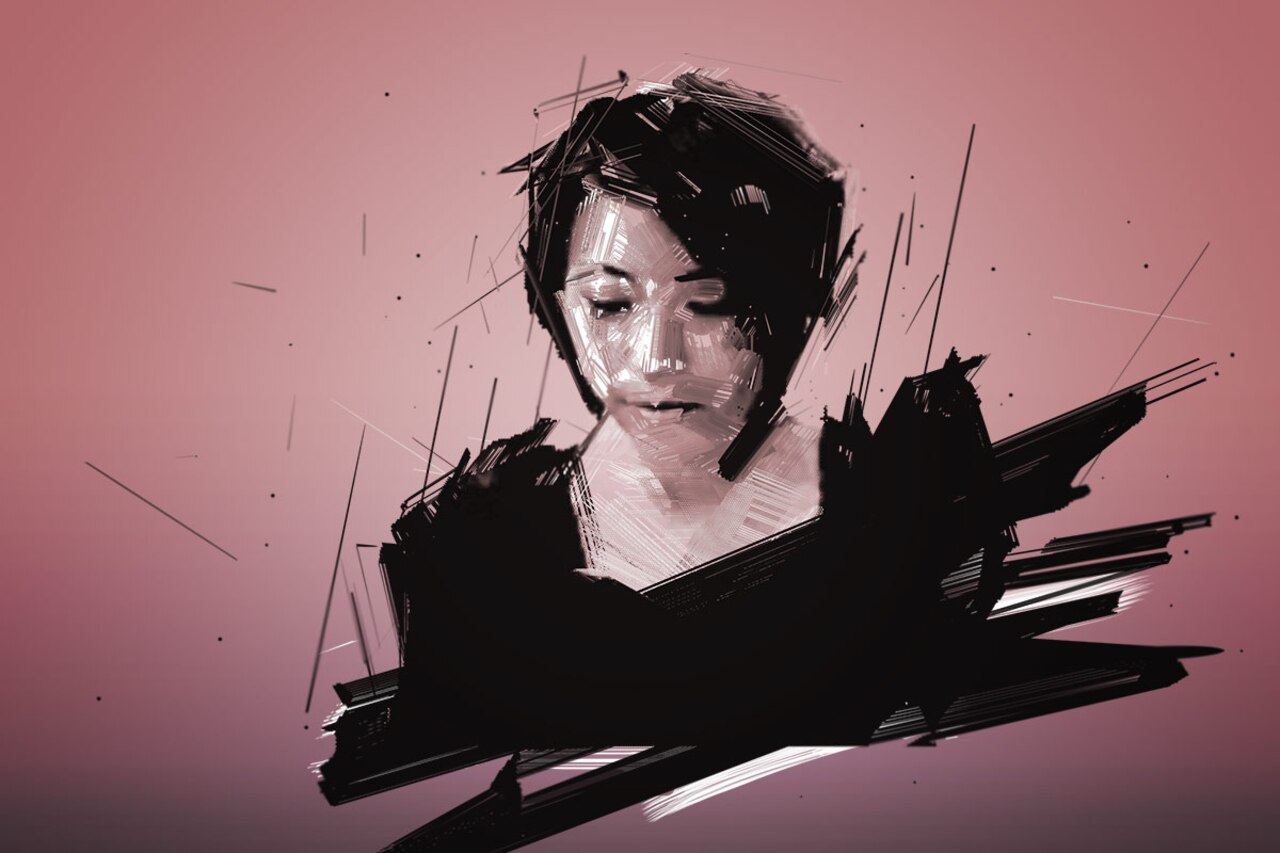
After Ground Zero split up in 1998, Otomo and Sachiko M started an improvising duo called Filament, focused on minimal electronics, in particular the sine waves of Sachiko’s notoriously empty sampler. Employing the sampler’s sines before anything had been loaded into its memory, Sachiko generated piercingly clear and high-pitched sounds, the musical representation of a laser beam. “I simply wanted to listen to sounds more deeply,” she told me “I think these musicians’ focuses are on hearing the sound, not physically playing musical instruments. Sometimes the instrument is an obstruction. They just want to listen more to the sound.”
The link between Sachiko’s emphasis on listening and the Japanese interest in natural sounds is clear. Insects, birds, leaves, a temple bell – they’re all devoid of melody, harmony or rhythm. It’s all about the sound itself. “This indicates a distinct taste,” writes philosopher Mari Shimosako. “The Japanese first enjoy the unique timbre of a single sound and then enjoy ma, the ‘space’ created after it.” Japan’s indigenous religion, Shinto, also has a musical tradition. The Shinto writer Tomokiyo Yoshisane developed a theory of the spirit of sound as purifying the human heart: “Simply listen to a ‘sound.’ Simply listen to a certain sound quietly and calm down. That’s all… You don’t have to listen to music. Listen to a certain unchangeable sound; the sound of a waterfall, the murmur of a brook, a sound of rain, the sound of waves, anything you like.”
Off Site closed in 2005. In spring 2014, a project called Multiple Tap – featuring a score of Japanese underground musicians performing in a kaleidoscope of changing combinations – packed out London’s Café Oto for a weekend. Toshimaru Nakamura, Akiyama and sho master Ko Ishikawa were there like old times, but we could also savour the wry humour of mould-breaking shamisen lute player Yumiko Tanaka and the video-tinted writhings of strip artist Miho Wakabayashi from Asakusa Rock-Za. Noise was represented by Hijokaidan (founded in 1979), the fiercely precise Katsura Mouri from the multiple-turntable duo BusRatch, sound artist Takahiro Kawaguchi, fluorescent light-wrangler Atsuhiro Ito (founder of Off Site), primitivist instrument builder Ken Ikeda and one-man sonic army Painjerk. And finally there was Doravideo (lifting its name from 1950s manga cat Doraemon), the laser-and-video-sampling project of Yoshimitsu Ichiraku (who was previously in I.S.O. with Otomo and Sachiko M).
New alliances are being forged among these artists – some of the subdued musicians of a decade ago are much better known now, and not necessarily playing so quiet. The whole Multiple Tap crowd-funded caboodle was assembled by a newcomer, young guitarist Katsuyoshi Kou, a man on a mission to change the way the world sees this type of music, particularly within Japan. “This kind of music is not understood at all in Japan,” Kou explained to me. “This is a big problem. I recently collected the same members and conducted some events in Japan. People heard this kind of music for the first time, and really enjoyed it. I think there’s a need to let people appreciate this music with a free sensibility. Everybody says, ‘This is special music’, but that’s not good for the music. It’s important to create an environment in which fans of other musics can also enjoy this.”
Meanwhile in Tokyo, Improvised Music From Japan’s Yoshiyuki Suzuki still supports the improvisation scene, which is constantly changing and being reinvigorated by new voices. Since 2012, Suzuki’s sub-label Ftarri has run a performance space and shop in Suidobashi. Many of the musicians in this essay can be heard there, or at the The Super Deluxe club in Nishi Azabu.
What’s that famous haiku poem by Basho? “The old pond – a frog jumps in – sound of water.” Musically speaking, the ripples from that Off Site moment, a decade ago, are still spreading out across the pool.
References:
Improvised Music From Japan
Ftarri
Insect Sounds
Toshimaru Nakamura
David Novak on Off Site
Hearn, Lafcadio. "Insect-Musicians" in Writings From Japan, Penguin Classics 1994.
Shimosako, Mari. "Philosophy and Aesthetics". Essay in The Garland Encyclopedia Of World Music Vol 7, Routledge 2002. p.548-551.
Header image © Acci Baba
